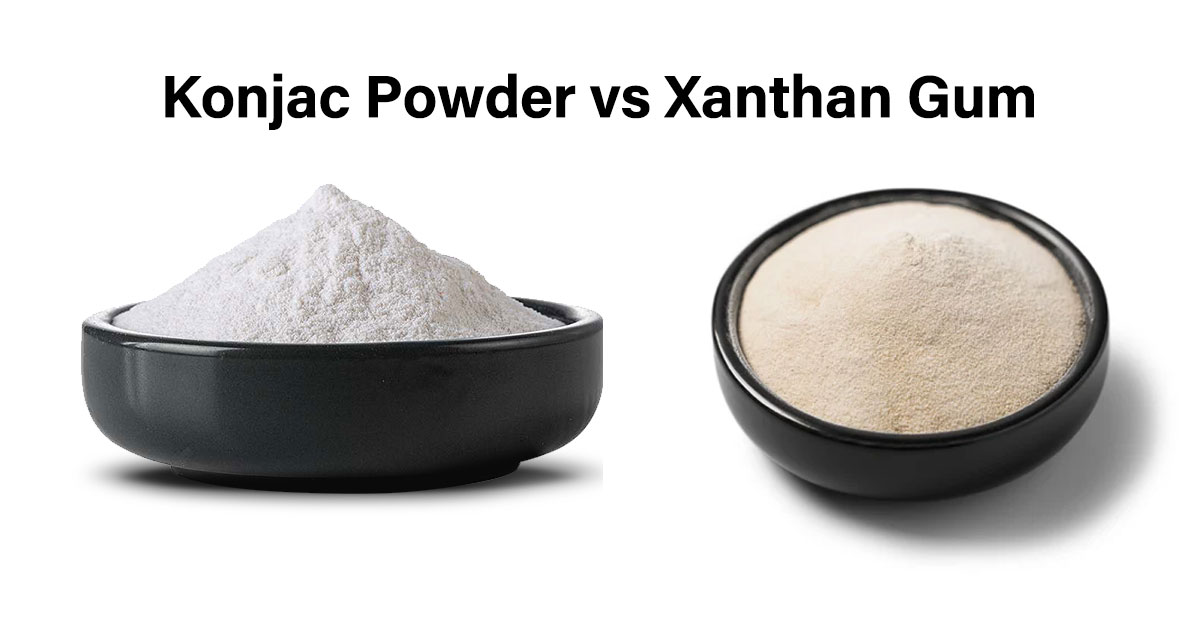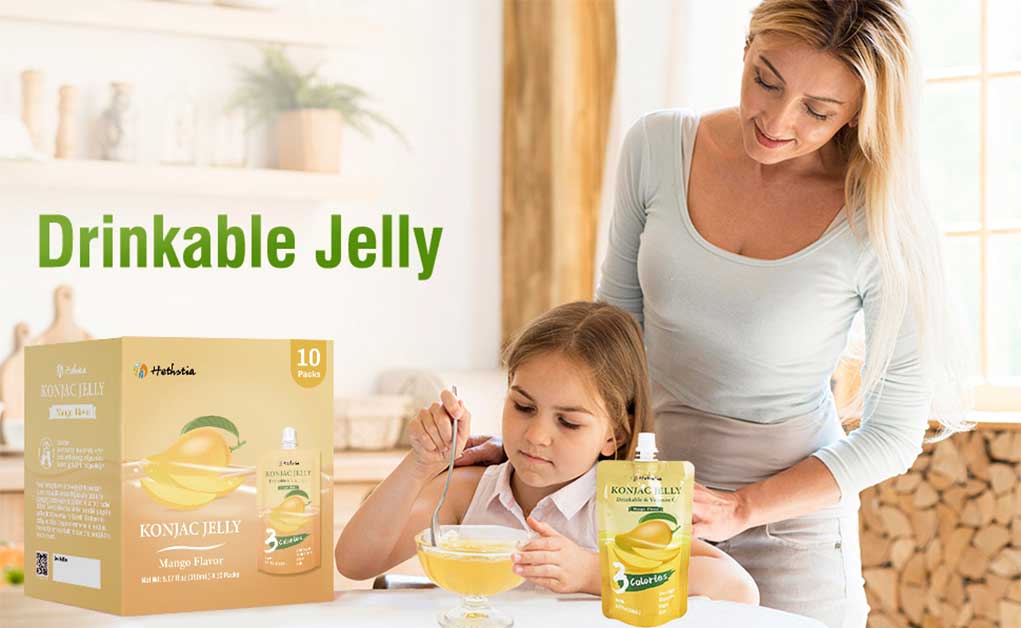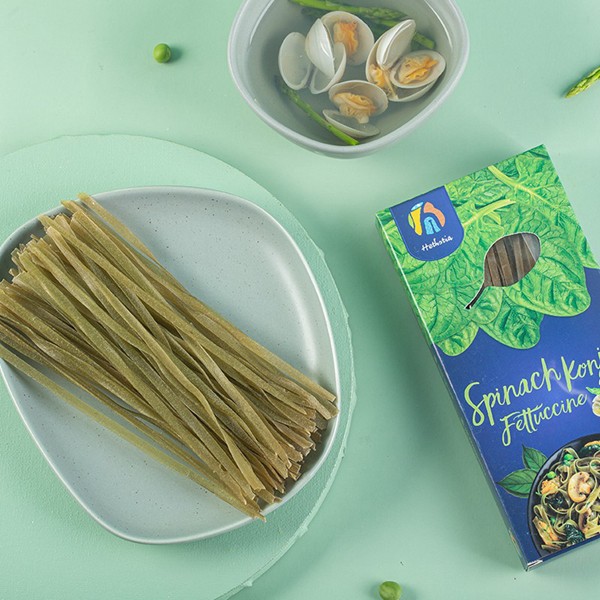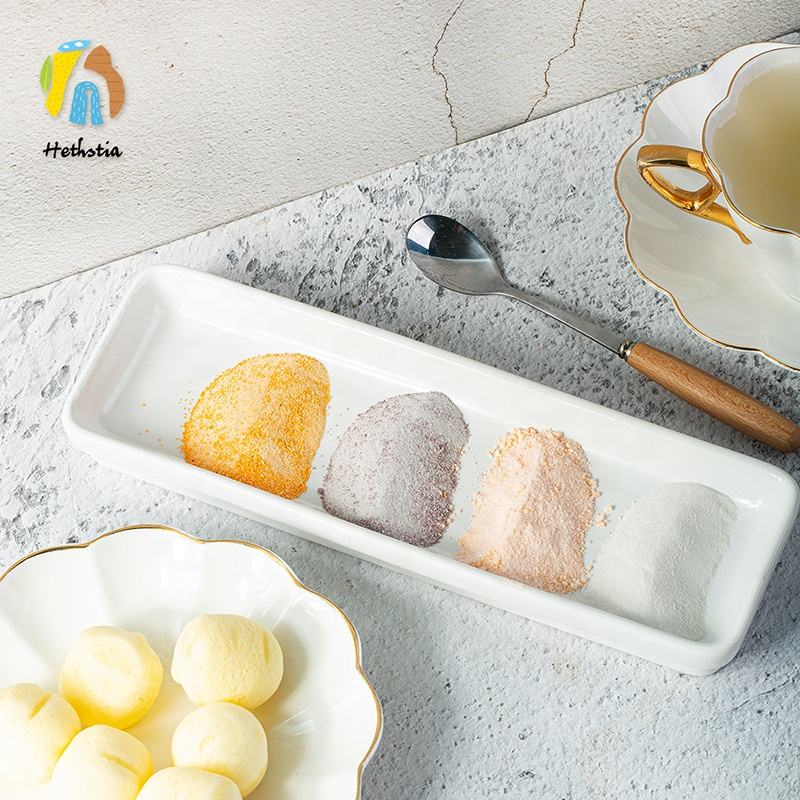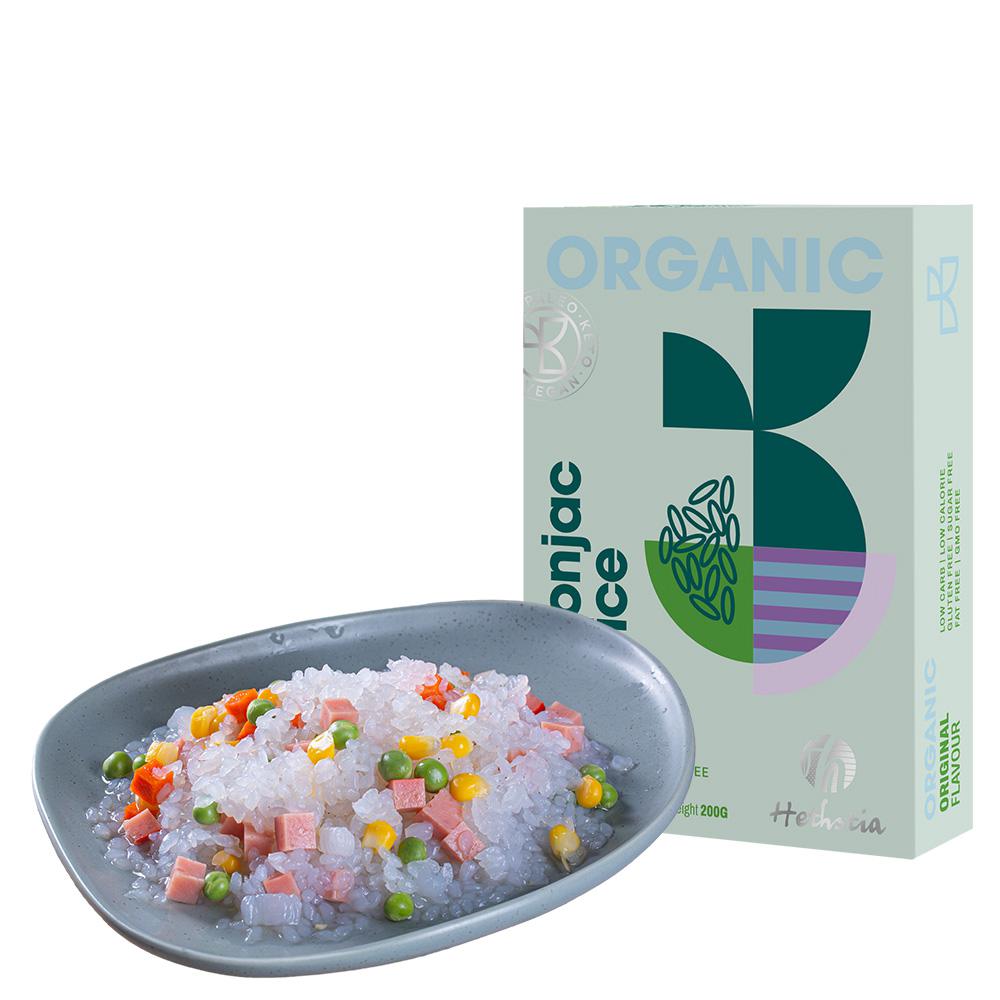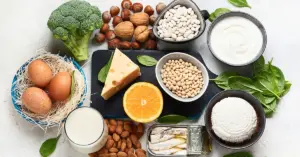We often use various thickeners in our cooking, with Konjac powder vs xanthan gum being two trendy choices. Understanding their differences and uses is crucial to improving our cooking skills.
1. Main characteristics and uses of Konjac powder vs Xanthan gum.
Konjac Powder: The main ingredient is glucomannan, derived from the Konjac plant.
- 1. High expansion: Konjac powder can absorb water and expand rapidly when it meets water, forming a gel-like substance, and its expansion rate is very high.
- 2. Low calorie: Almost no calories, it is the ideal raw material for weight loss and low-energy food.
- 3. High dietary fiber: Rich in soluble dietary fiber, helps to promote intestinal health and increase satiety.
- 4. Good gel properties: The gel formed is thermally reversible, i.e., it can be dissolved by heating and re-formed into gel after cooling.
- 5. Stability: During food processing, Konjac flour can maintain the stable structure of food and prevent delamination and precipitation.
Konjac Powder Uses:
- Make Konjac tofu, jelly, fudge, and other low-calorie foods.
- Applied as a thickener and stabilizer in dairy products, jams, and condiments.
- Increase water retention and softness of dough in baking.
- Make healthy meal replacement food and weight loss products.
Xanthan Gum: Complex polysaccharide produced by the bacterium by fermentation of sugars.
- 1. Excellent thickening and suspending ability: Xanthan gum can significantly increase the viscosity of the solution at low concentrations, effectively preventing particles from settling.
- 2. Thermal stability and pH stability: It can maintain stability in a wide range of temperatures and pH values, suitable for a variety of food processing conditions.
- 3. Good emulsification and stabilization: It helps to stabilize the oil-water mixing system and improve the taste and appearance of food.
- 4. Non-ionic: It will not have a chemical reaction with most food ingredients, and it has good compatibility.
- 5. Biodegradable: Natural, safe for the human body, easy to digest and absorb.
Xanthan Gum Uses:
- Widely used as a stabilizer and suspending agent in beverages (e.g. fruit juice, tea drinks).
- Dairy products such as ice cream and yogurt improve texture and taste.
- Used in condiments (e.g. salad dressings, ketchup) to prevent layering and settling.
- In bakery products such as bread and cakes add bulk and moisturizing properties.
- Also used industrially to thicken fluids in personal care products, pharmaceuticals, and oil extraction.
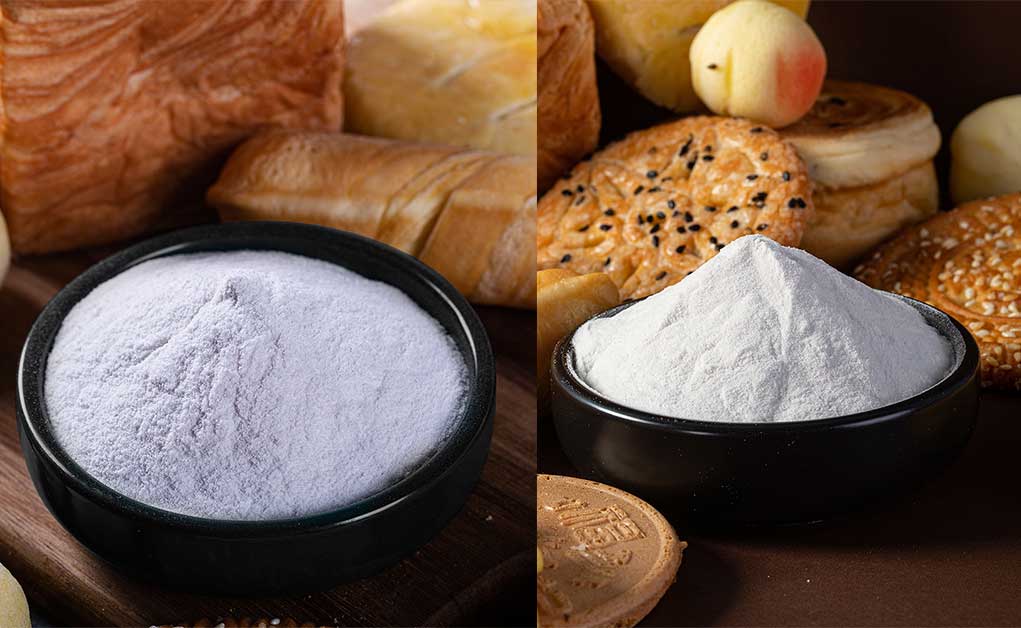
2. Health Benefits and Nutrition Facts of Konjac powder vs Xanthan gum
Konjac Powder:
- Digestive health: promotes intestinal peristalsis, and helps prevent constipation.
- Lowering cholesterol: Helps reduce blood cholesterol levels.
- Diabetes Management: Controls blood sugar, suitable for diabetics.
- Weight Loss: High fiber content, helps to increase satiety and control weight.
- Minerals & Trace Elements: Contains minerals such as calcium, potassium, selenium, and amino acids, which help to maintain the body's acid-base balance and health.
Xanthan Gum:
- Digestive friendly: As a dietary fiber, it promotes the growth of beneficial intestinal flora and helps the digestive process.
- Antioxidant: Helps prevent cellular aging.
- Non-nutritive health: In personal care and pharmaceutical preparations, provides a stable suspension system that aids in the delivery of active ingredients.

3. Cooking and baking applications
Konjac Powder:
- Suitable for gluten-free baking, improves the water holding capacity and structural stability of dough, making bread, cake, and other products more fluffy and elastic.
- Ideal raw material for making jelly, pudding, and vegetarian imitation products (e.g. vegetarian meat, vegetarian fish). Used as a thickener in sauces and dressings to provide a gel-like consistency.
- Low-calorie substitutes for making Konjac noodles and konjac tofu to satisfy the taste and facilitate weight management.
Xanthan Gum:
- Improves dough elasticity and structure in baked goods.
- Often used in sauces and dressings to provide a sticky texture.
- It can be used as a gluten substitute for gluten-free food preparation
- Hot and cold stabilized. Added to both cold and hot beverages to prevent ice crystal formation or liquid separation.
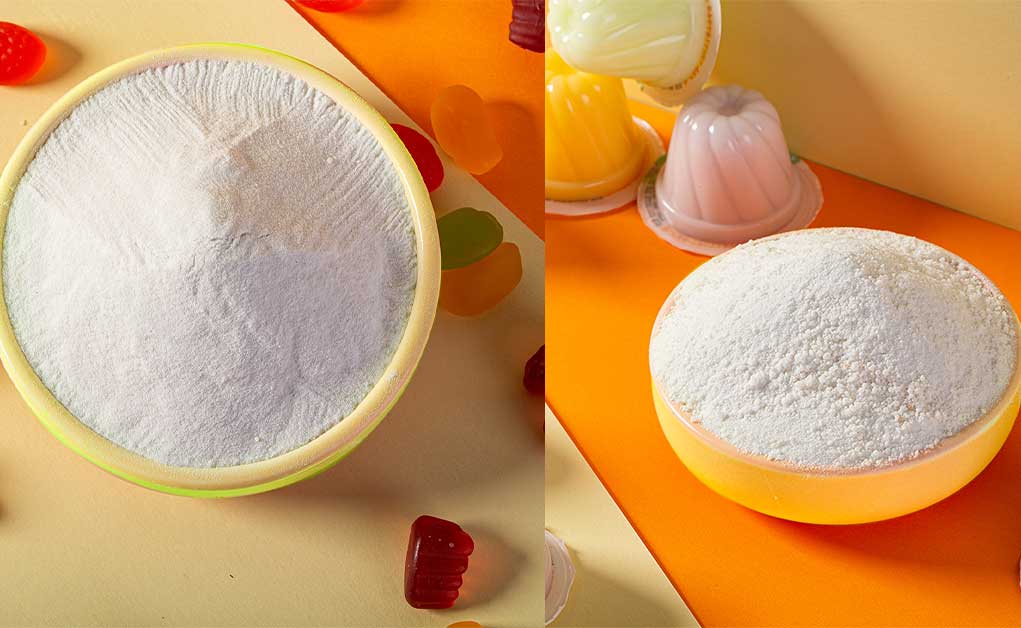
4. Texture and consistency
Konjac powder: forms a gel-like consistency when used, suitable for jellies and candies.
Xanthan gum: provides a smooth, viscous texture that is especially suitable for baking and liquid mixtures.
5. Interchange of Konjac powder vs xanthan gum
Konjac powder vs xanthan gum can be used interchangeably in some cases, but differences in proportions and final texture should be noted.
When applied to specific recipes and dietary needs, the amounts should be adjusted to meet specific requirements.
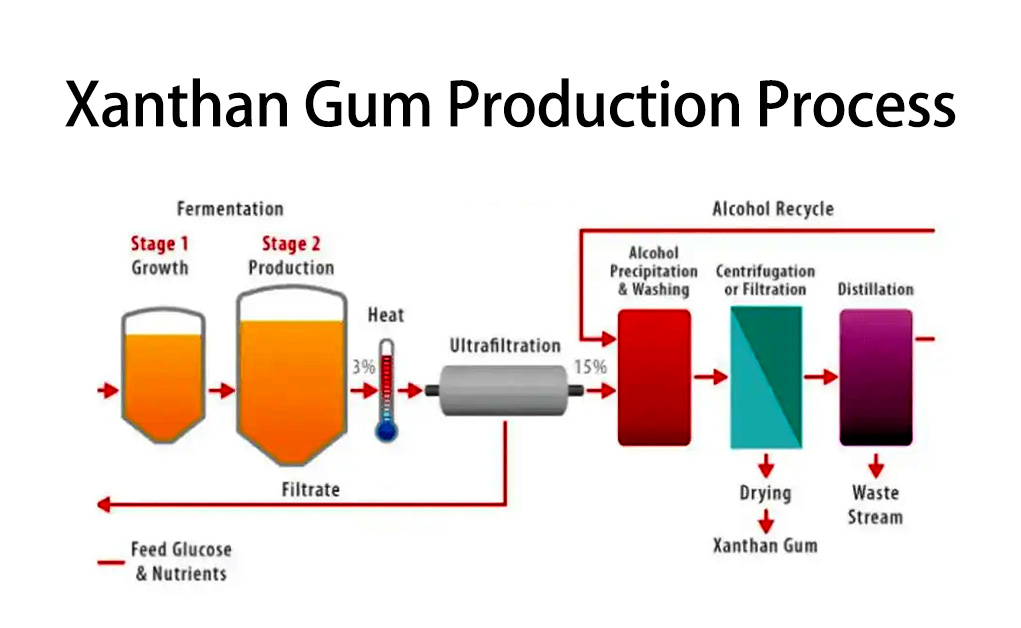
7. Other thickener alternatives
- Carrageenan: Derived from red seaweed, carrageenan is divided into different types, which can form thermally reversible or irreversible gels and is widely used in jellies, dairy products, meat processing, and other fields.
- Guar Gum: Derived from guar beans, it is a highly efficient thickener, commonly used in ice cream, beverages, and bakery products, it can improve the viscosity and stability of the products, and the cost is relatively low.
- Agar: Extracted from seaweed, agar is an all-natural vegetable gum commonly used in jellies, desserts, and vegan cuisine, especially for products requiring strict vegetarian or halal certification.
- Pectin: Mainly derived from citrus and apple peels, it is suitable for jams, jellies fudge, etc. It can form different types of gels depending on pH and sugar concentration.
- Gelatin: Derived from animal collagen, it is mainly used in jellies, candies, yogurt toppings, etc., but it is not a vegan-friendly option.
- Carboxymethyl cellulose (CMC): A synthetic cellulose derivative, widely used in a variety of food products, such as ice cream, beverages, and sauces, as a stabilizer and thickener, which effectively prevents the separation of water and oil.
FAQ
Can Konjac flour cause allergies?
Although rare, some people may be allergic to Konjac flour and should be watched for uncomfortable reactions when trying it for the first time.
About Usage Control
The thickening effect of Konjac flour is significant, a small amount can achieve the desired effect, and too much may lead to food being too solidified or having poor taste.
About Dissolving Skills
Konjac flour needs to be evenly sprinkled into the cold water and mixed thoroughly before heating, to avoid the formation of lumps or uneven gel.
About Digestive Problems
Consuming large amounts of konjac flour may lead to digestive problems such as bloating or diarrhea, and is recommended to be consumed in moderation.
What can I use instead of xanthan gum?
Konjac flour is a good option for those looking for gluten-free or plant-based alternatives, but be aware of its unique taste and usage.
How to use konjac powder?
Detoxification and laxative: Take 5-10 grams of konjac powder, add about 200 ml of boiling water, stir well and drink, 1-2 times a day.
Weight loss: Early in the morning on an empty stomach, take 5-10 grams of konjac flour, with about 250 ml of warm water, 2-3 times a day, 15 minutes before meals.
Diabetes management: 5-10 minutes before meals, take 5 grams of konjac flour, add 200ml of water, and drink, 3-4 times a day.
Where to buy Konjac powder?
Available in North America at our Amazon retail store. Other regions can message us and our account managers will provide a channel to purchase.
How to use konjac powder to make jelly?
Recipe: For every 250 ml of water, there are about 7.5 g of konjac flour and 40 g of sugar.
1. Mix konjac flour with a small amount of cold water (the amount of water outside the recipe) to avoid lumps.
2. Add water and sugar in a pot, and heat over medium-low heat until the sugar is completely dissolved.
3. Slowly pour the pre-mixed Konjac flour water into the heated liquid, stirring quickly while pouring to ensure that the konjac flour is evenly distributed in the liquid and to avoid the formation of clumps.
4. Stir continuously and heat until the mixture comes to a boil, and then reduce the heat to low and maintain a light boil for about 2-3 minutes, so that the Konjac flour is fully activated and a uniform gel is formed.
5. Keep the mixture at a slight boil for about 2-3 minutes to activate the Konjac powder and form a homogeneous gel. Turn off the heat and allow it to cool down a little (to avoid damaging the molds by getting it too hot), then pour the jelly liquid into the pre-prepared molds. If adding fruit pieces, gently mix them in before pouring them into the molds.
6. Place the molds in the refrigerator freezer for at least 2 hours or until the jelly is completely solidified.
7. Remove the solidified jelly and gently shake the molds to help release it from the molds. Serve with slices of fruit, mint leaves, or other decorations as you like.
Who are the best Konjac gum suppliers in China?
Hethstia, Produced by Sichuan Sentaiyuan Biotechnology Co., Ltd.
Is xanthan gum safe for dogs?
There is no direct research evidence that it is toxic or harmful to canines, and in general, it should be relatively safe for dogs. Some dogs may have a food intolerance or allergic reaction to xanthan gum. If a dog develops indigestion, vomiting, diarrhea, or skin irritation after consuming a food containing xanthan gum, stop feeding it immediately and consult a veterinarian.
What does xanthan gum do in baking?
Thickening and stabilization, moisture retention, emulsification and suspension, improvement of dough properties, control of crystallization, and health properties.
Is xanthan gum gluten free?
Yes, xanthan gum is gluten-free. Xanthan gum is a polysaccharide produced by the bacterium Xanthomonas campestris through a fermentation process and is not associated with gluten-containing grains such as wheat, barley, or rye.
Is xanthan gum halal?
Yes, xanthan gum is halal. Its production process does not involve any ingredient of animal origin and it is alcohol-free, so it meets halal standards.

